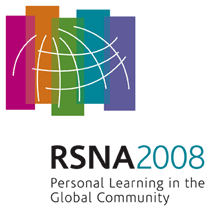
Abstract Archives of the RSNA, 2008
SSK10-05
MIRC Teaching File Converter: An Efficient Mechanism for Repurposing Existing Teaching File Content into the MIRC Document Format
Scientific Papers
Presented on December 3, 2008
Presented as part of SSK10: Informatics (Education)
 Research and Education Foundation Support
Research and Education Foundation Support
Adam E. Flanders MD, Presenter: Consultant, Geron Corporation, Denver, CO
Njogu Njuguna MD, Abstract Co-Author: Nothing to Disclose
William W. Boonn MD, Abstract Co-Author: President, MedicalPocketPC.com Inc
Co-founder, iVirtuoso, Inc, Baltimore, MD
Khan Mohammad Siddiqui MD, Abstract Co-Author: Employee, Microsoft Corporation, Redmond, WA
Co-founder, iVirtuoso, Inc, Baltimore, MD
Medical Advisory Board, General Electric Company, Barrington, IL
An automated conversion processor minimizes the barriers to transitioning to the MIRC platform for users with existing web content.
The medical imaging resource center (MIRC) imaging software suite provides a single point solution for authoring, storing, searching and sharing educational content locally or world-wide. Users with existing image collections can rapidly create an entire MIRC site with the push of a button using the new MIRC ZIP service. However, users with existing non-MIRC web based teaching file libraries have no simple solution for converting existing collections to the MIRC format.
This application converts existing web content to a MIRC compatible format and exports the content to a standard MIRC storage service. This is used to publish teaching cases from a proprietary web based teaching file to a public MIRC site. All textual and graphical elements from the selected case are submitted via HTTP POST to a processing script written in the open source scripting language Perl which resides on the teaching file server. The textual elements and references to the included images are used to construct the appropriate XML tags of a MIRC document. The newly created MIRC document and copies of the included images are bundled into a ZIP archive. The ZIP file is then automatically submitted to the MIRC submit service using HTTP POST. Once received, the MIRC software automatically unbundles the archive, creates and indexes the newly submitted document and the case is instantly available for viewing on the MIRC server. This method has been used to export over 80 select teaching file cases for viewing on a public MIRC server without the requirement to re-enter any existing data and the conversion process takes no more than five seconds to complete per case.
A substantial barrier to adoption of the MIRC solution for teaching file repositories is the requirement to re-author existing content into the MIRC format. The re-authoring process can be laborious especially when many cases require conversion. This application is currently used to rapidly publish select Neuroradiology cases to a public institutional MIRC site.
Flanders, A,
Njuguna, N,
Boonn, W,
Siddiqui, K,
MIRC Teaching File Converter: An Efficient Mechanism for Repurposing Existing Teaching File Content into the MIRC Document Format. Radiological Society of North America 2008 Scientific Assembly and Annual Meeting, February 18 - February 20, 2008 ,Chicago IL.
http://archive.rsna.org/2008/6019087.html


 Research and Education Foundation Support
Research and Education Foundation Support